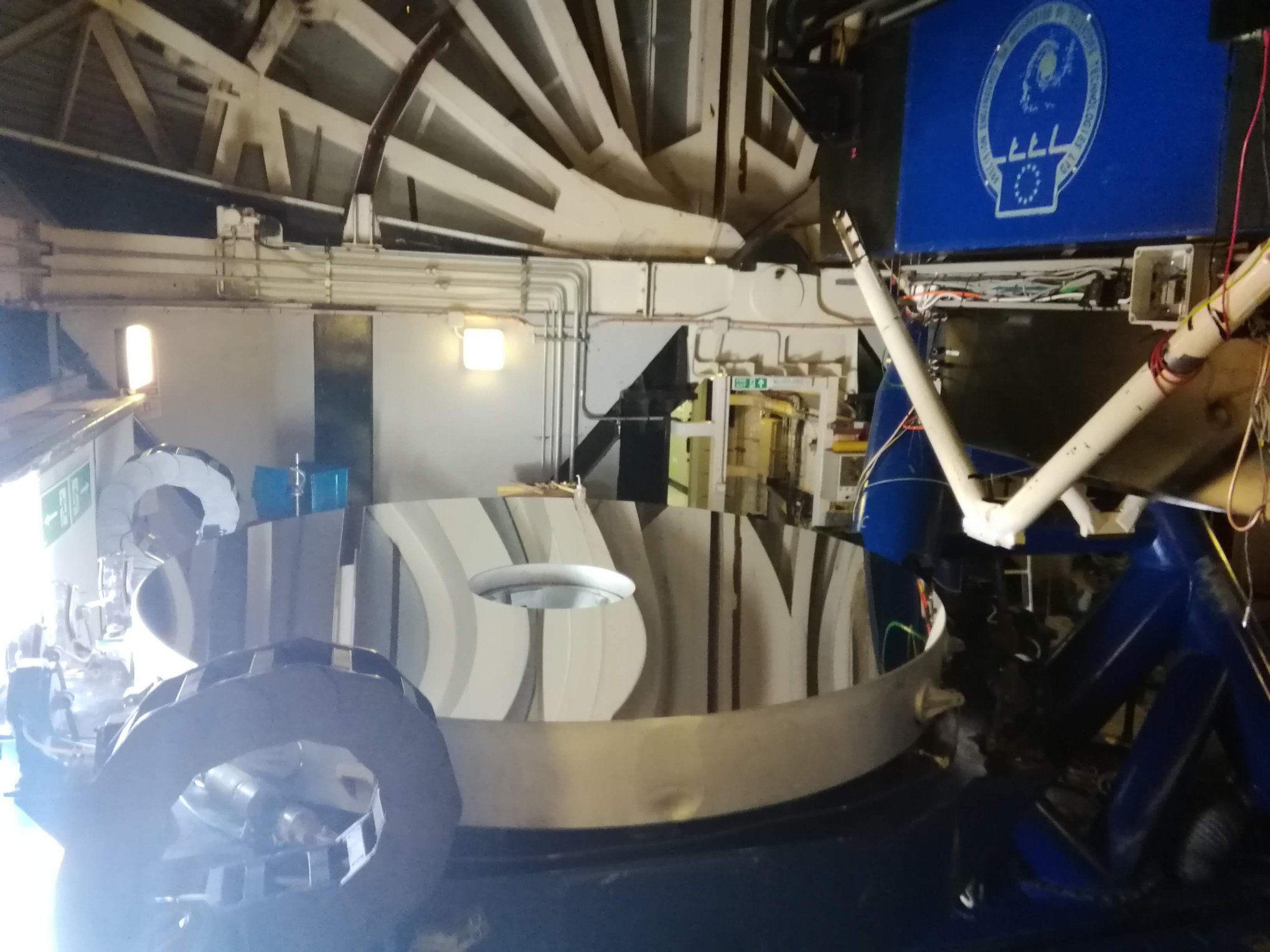Liverpool Telescope Realuminised

Credit: The LT Team
For the past two weeks the Liverpool Telescope has been out of operation while we realuminise the primary mirror.
Realuminisation is necessary because the reflective part of the mirror, an incredibly thin layer of aluminium on the mirror's glass body, degrades over time. Humidity and other contaminants, especially dust from the Sahara desert, damage the aluminium layer and reduces its overall reflectivity, which means the telescope's efficiency drops. Periodic cleaning only slows down this process, and after several years it's eventually better to take the aluminium off and put a fresh layer on. The LT's primary mirror is a precision-crafted disc of glass two metres in diameter and 20 cm thick, weighing 1.3 tonnes. Realuminising such a large and heavy piece of sensitive equipment without scratching it, or causing any damage at all, is a very complex procedure and takes two weeks to complete.
The processes over the course of two weeks are as follows:
1. Most of the instrumentation and control computers are mounted underneath the mirror. All of this equipment has to be removed, and then the back of the telescope is dismantled to provide access to the mirror.
2. The primary mirror is slid out from underneath the telescope within its mirror cell: the part of the telescope structure which supports the mirror. It is immediately covered in lint-free tissue to protect it and prevent dangerous reflections.
3. The mirror is carefully lifted off the mirror cell into a special padded transit box, and hoisted out of the top of the open enclosure to a waiting lorry. The lorry slowly and carefully takes the mirror the 500 metres to the aluminising plant at the neighbouring William Herschel Telescope (WHT).
4. At the WHT, the mirror's aluminium layer is carefully removed with powerful acids, washed and carefully dried to ensure not a single speck of dust remains on the surface.
5. The mirror is then put in the WHT's aluminising vacuum chamber where a new layer of pure aluminium is carefully evaporated onto the surface. The new layer is as thin as gold leaf, about 350 aluminium atoms deep. It measures just 100 nanometres (0.0001 mm) thick, that's 160,000 times thinner than kitchen foil!
6. The mirror is repackaged and carefully transported back to the LT. There it is hoisted back through the open enclosure, unpacked, and refitted to the telescope.
7. All of the instrumentation is remounted on the telescope. A process of recommissioning then begins. Over several days and nights the telescope's engineering, optical and computer systems are all checked to make sure everything is in alignment and the telescope is able to run robotically again.
We're obviously very proud of the Liverpool Telescope, and, as this shows, very protective too!

